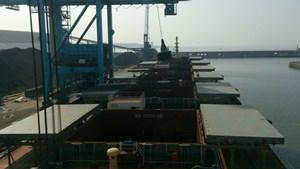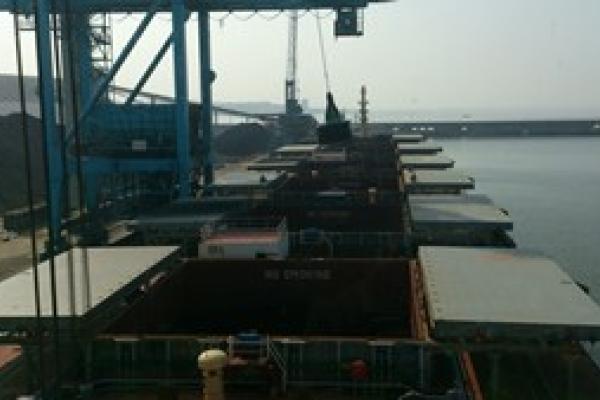
Steamship Mutual
Published: October 01, 2015

On the 18 August, 2015 The Bahamas Maritime Authority published its report into the sinking of the “Bulk Jupiter” in January 2015, with the loss of 18 lives, and on the 20 October 2015 the IMO issued a circular letter warning of the dangers of the carriage of bauxite.
Bauxite was traditionally considered to be a “safe” cargo for bulk carriers. The only entry for bauxite in the International Maritime Solid Bulk Cargoes Code (IMSBC code) lists it as a “Group C” cargo which is not liable to liquefy (“Group A”) or to possess chemical hazards (“Group B”). However this “Group C” classification applies to bauxite which meets certain parameters for particle size (70% to 90% lumps: 2.5 mm to 500 mm / 10% to 30% powder) and moisture content (0% to 10%). If the bauxite cargo comprises a finer material, or if it has more moisture, then it should not automatically be considered as a “safe” “Group C” cargo.
The “Bulk Jupiter” was fixed to load a cargo of 46,000 tonnes of bauxite at Kuantan, Malaysia for China. After arrival at Kuantan on 16 December 2014, the Master was given a certificate issued by the shippers on 11 December, stating that the cargo was a Group “C” cargo, with particle size (70% to 90% lumps: 2.5 mm to 500 mm / 10% to 30% powder) and moisture content (0% to 10%), matching the IMSBC parameters.
There had been heavy rainfall at Kuantan during the five days between the date on the certificate and the commencement of loading. It is understood that the cargo for BULK JUPITER was stockpiled in the open, exposed to the weather. There was further rainfall while the ship was in port, with loading operations being suspended for various periods because of rain.
The subsequent investigation found that the exporters of the cargo had instructed an independent surveyor to attend, who took samples of the cargo at approximate intervals representing each 5,000 tonnes loaded. These were analysed later, and each sample was found to comprise more than 20% water. It seems that the Master was not aware of this operation, and that no information about it was passed to him.
The “Bulk Jupiter” completed loading on 30 December 2014, and sailed that evening. She sank on the morning of 2 January 2015, with the loss of 18 of her 19 crew.
The sole survivor was the ship’s cook, who had started his daily work in the galley at 06.00. The ship was rolling in typical monsoon weather conditions in the South China Seas. He had returned to his cabin when, at about 06.40, he heard the ship’s general alarm signal, followed by the Master’ voice instructing all hands to go to the bridge. He started to make his way to the bridge, but met other crewmen who told him that they were to proceed to the port lifeboat. He went back to his cabin quickly for his life-jacket and immersion suit.
The ship blacked-out as he left his cabin, and took a list to starboard, that the cook estimates was about 45 degrees. Because of the list, he could not open the external door from the accommodation to the port side lifeboat deck, so he went back up the internal staircase, where he met the ship’s Master, coming down. They both exited the accommodation onto a small platform at the starboard aft side of “C” deck, jumped into the sea and swam some distance away from the ship. The cook reports that he looked back to see his ship almost totally submerged, but he did not see any of the other crewmen.
At about 07.00 the “Bulk Jupiter’s” EPIRB automatically broadcasted a distress message, and ships in the vicinity started a search. A containership spotted a ship’s lifeboat and life raft, but both were empty. At about 14.00 the same ship spotted two persons in the water: the cook was taken onboard a tug soon after, together with the body of the Master, who had died in the water. The Chief Officer’s body was later recovered, but none of the other crew was found.
The IMO have issued a circular, recommending that if the Master has doubts as to whether a bauxite cargo presented for loading does comply with the parameters for moisture or particle size of a “Group C” cargo then the Master should stop loading, and have the shipper verify the properties of the cargo.
A Master should consider the possibility that a bulk cargo might have a higher moisture content than certified when there has been rainfall at the port in the period before and during loading of cargo, and if the cargo has been exposed to the weather. Apart from the influence of weather, it is reported that some bauxite cargoes are processed before loading, by washing, or crushing to break down large particles, which might affect the moisture content and particle size of cargo actually loaded.
As set out in its October circular the IMO is taking action to investigate the hazards and risks associated with the carriage of bauxite as well as any necessary amendments to the IMSBC Code dependent on the results if its investigations.
The Master and ship’s staff should be vigilant in checking the condition of cargo before and throughout the loading operation, onboard ship, and ashore at cargo stockpiles, if this is possible. Where cargo is brought to the ship in barges, then cargo in all barges, and not just the first one presented for loading, should be carefully checked. The “can test”, described in the IMSBC code, should always be used by the Master to give an early indication of any problem and, if there is reason to doubt the cargo being loaded is consistent with the shipper's declaration it may be appropriate to stop loading but, in these circumstances, the vessel's Master should in any event request the shipper to verify the properties of the cargo and should seek advice from the Club and its local correspondents.
Article by Bill Kirrane


